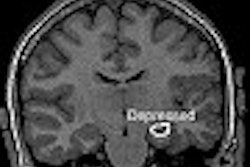(Radiology Review) Radiologists at the Hospital for Joint Diseases in New York City have described soft-tissue, synovial, and osseous MRI findings in septic arthritis in the American Journal of Roentgenology.
This study determined "synovial enhancement, perisynovial edema, and joint effusion had the highest correlation with the clinical diagnosis of a septic joint."
Early diagnosis of septic arthritis is important in order to achieve the best patient outcome, according to the authors. They scanned fifty consecutive patients with septic arthritis using a 1.5-tesla MR scanner. T1-wighted, T2-weighted or STIR, and contrast-enhanced images were obtained. Septic arthritis was proven through culture after joint aspiration or biopsy or by follow-up of response to antibiotic treatment. Osteomyelitis was confirmed through biopsy of the bone. A number of contrast-enhanced control cases without septic arthritis (N=22) also were evaluated.
Scans were assessed by two radiologists for "synovial enhancement, perisynovial edema, joint effusion, fluid outpouching, fluid enhancement, and synovial thickening." They also evaluated the marrow signal in bare areas and classified this as diffuse or abnormal.
"MRI findings were compared with microbiologic, clinical, and surgical data and diagnoses," the authors reported.
MRI of septic joints showed "synovial enhancement (98%), perisynovial edema (84%), joint effusions (70%), fluid outpouching (53%), fluid enhancement (30%), and synovial thickening (22%)."
Also, "the marrow showed bare area changes (86%), abnormal T2 signal (84%), abnormal gadolinium enhancement (81%), and abnormal T1 signal (66%)." Joint effusions were common (70%), and were found in 91% of large joints and 54% of small joints.
Thirty-three cases of concomitant osteomyelitis were present. Diffuse T1 signal abnormalities were present in 86% of osteomyelitis cases and focal changes were shown in 14%.
"Interestingly, in a third of cases with the diffuse pattern of edema, osteomyelitis was not present, and in 29% of cases with normal T1 signal, osteomyelitis was seen at biopsy," they added.
MRI findings of septic arthritis and associated osteomyelitis in adultsKarchevsky, M, et. al.
Department of radiology, Hospital for Joint Diseases, New York City
AJR 2004 January; 182:119-122
By Radiology Review
February 17, 2004
Copyright © 2004 AuntMinnie.com


.fFmgij6Hin.png?auto=compress%2Cformat&fit=crop&h=100&q=70&w=100)





.fFmgij6Hin.png?auto=compress%2Cformat&fit=crop&h=167&q=70&w=250)











